News & Insights
All Blog Posts
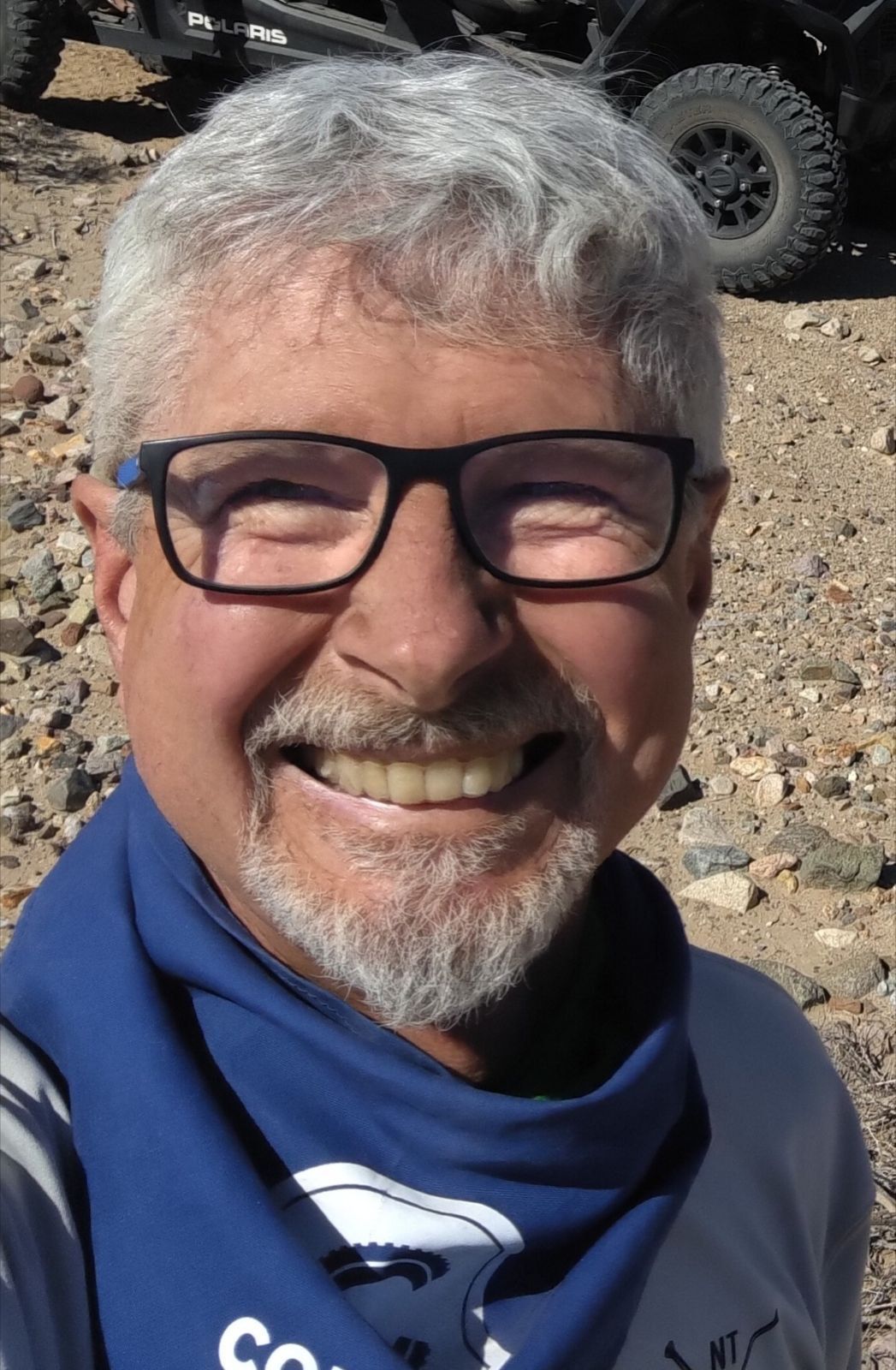
Bill Grabert is stepping down from his position as treasurer on Tuleyome’s volunteer Board of Directors – we thank him for his many years of service! Bill first joined Tuleyome as a staff member in 2016. His nature-based teaching influenced many youth over the years with school field trips throughout the Berryessa Snow Mountain National Monument region, from Redbud Trail to Conaway Ranch. As part of Tuleyome’s team of instructors for the California Certified Naturalist program, Bill inspired adults to care for the region. His love of the area began as soon as he graduated from college and began working as a geologist in Lake County. Bill has devoted his diverse knowledge and skillset to care for, steward, and enjoy California’s northern Inner Coast Range Mountains for many years. He will be missed on the Board but we look forward to seeing him on the trails! -Nate Lillge (Adventures and Engagement Director) and Lyndsay Dawkins (Volunteer Tuleyome Board President)
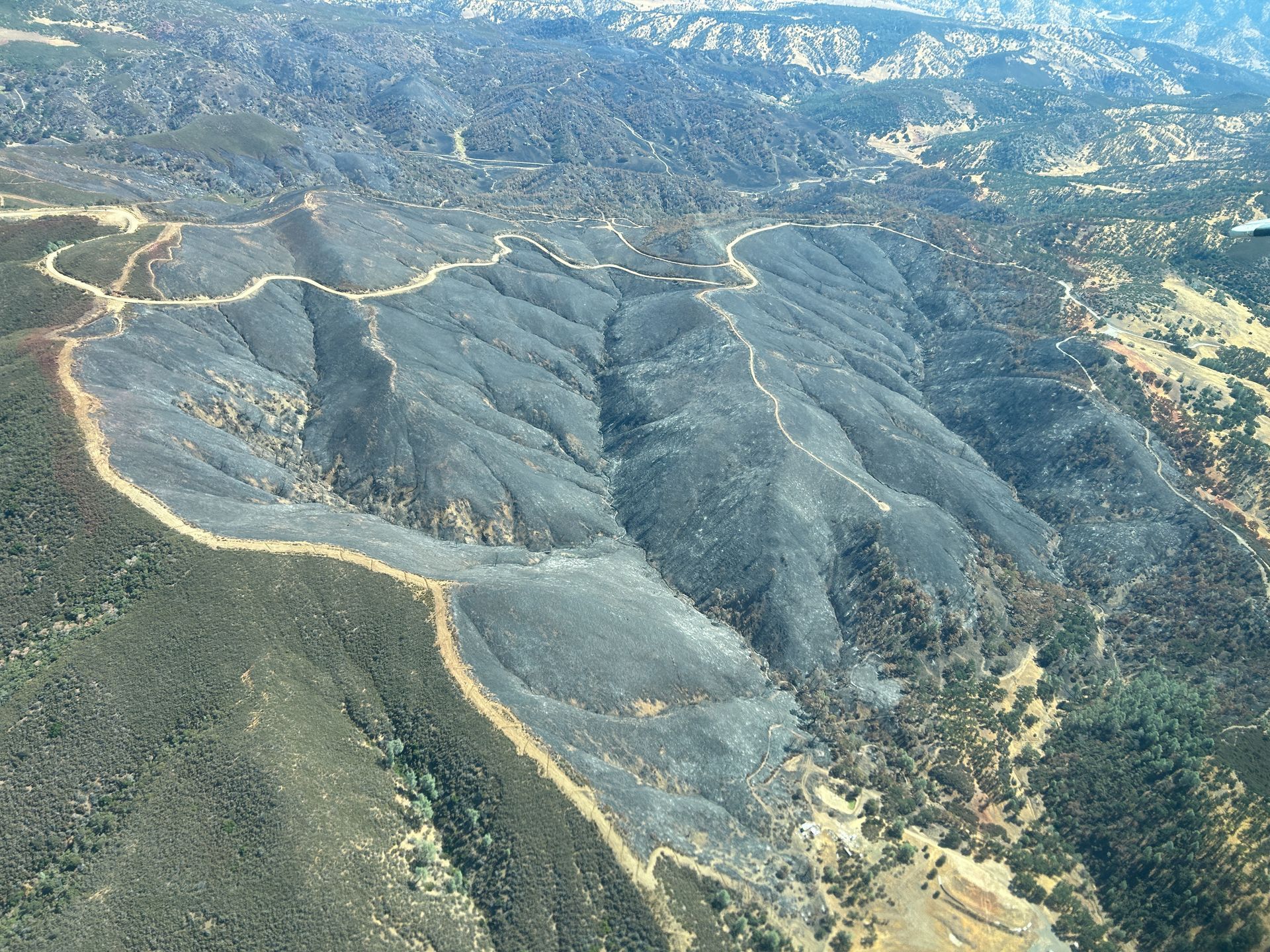
Fifty-eight and a half million acres of America's wildest forests have been protected for nearly 25 years by the Roadless Rule, a conservation cornerstone that could soon disappear. Established in 2001, the Roadless Area Conservation Rule (RACR) , more commonly known as the Roadless Rule, designated "Inventoried Roadless Areas" (IRAs) across our nation's forests, prohibiting new roads from being built. Now, USDA Secretary Rollins wants to rescind it . From Alaska to California, the losses from this rollback would be massive. In Alaska, 92% of the Tongass National Forest could lose protection, threatening one of the world's most pristine ecosystems and the indigenous communities who call it home. California would lose protections across 4.4 million acres spanning 21 national forests , which has the potential to impact treasured places like Inyo, Shasta-Trinity, and the Berryessa Snow Mountain National Monument. Rule Born from Necessity, Not Ideology The Roadless Rule traces back to 1998, when U.S. Forest Service Chief Mike Dombeck saw the agency's vast road system as a major environmental and fiscal problem . To put this in perspective: the Forest Service maintains eight times more miles of road than the Interstate Highway System. The agency had too many roads to properly maintain for safety and environmental purposes, with poorly maintained roads contributing to erosion and other harms across national forests. The road maintenance backlog had ballooned to $8.4 billion while the agency received only 20% of the funding needed to maintain roads to environmental and safety standards. Dombeck proposed a moratorium on road construction in undeveloped forest areas across most of the National Forest System. The agency adopted an 18-month moratorium in February 1999 pending completion of an overall road management plan. Later that year, the agency undertook a rule making process to provide long-term administrative protection for roadless areas. The Forest Service conducted an extensive public involvement process that produced 1.7 million comments , with the majority favoring a strong national policy protecting roadless areas. The resulting Roadless Rule was not and is still not a blanket ban: it makes exceptions to allow access to non-federal land inholdings and pre-existing mineral leases, and allows logging to reduce fire risk, improve habitat or aid in the recovery of endangered species. What began as a fiscally prudent solution to an unwieldy road network became a cornerstone of forest conservation, one that Americans overwhelmingly supported then and continue to support today. The Administration's Claims vs. Reality According to USDA Secretary Rollins , the rule is “overly restrictive”, hinders fire prevention and responsible timber production, therefore the Rule poses “real harm to millions of acres of our national forests.” Rollins linked rescinding the Rule with Presidential Executive Order 14192, "Unleashing Prosperity Through Deregulation .” The reality is different. Rollins' claim ignores what's actually at stake. Roadless areas are essential ecosystems that provide clean air and water while keeping wilderness intact. They also serve as critical refuges for wildlife; 57% of America's most vulnerable species depend on roadless areas for habitat. For the 156 million Americans who visit national forests annually, these areas offer irreplaceable backcountry recreation experiences. Most strikingly, the administration's fire prevention argument is backwards. Scientific research reveals that 88% of wildfires are human-caused , and 95% of these fires start within half a mile of a road. Areas closest to roads experience 53% more fires than would occur by random chance. Less than 3% of wildfires start in wilderness areas more than a mile from roads. This research indicates that more roads through our forests are more likely to increase fires and would outweigh the effects of improving fire containment. While the administration claims roads improve fire response, fire management teams consistently identify inadequate resources and personnel shortages, not roads , as the primary barriers to effective wildfire management . Rather than building roads that increase fire risk, fire management experts advocate for investing in cultural and prescribed burns, fire mitigation and forest restoration, proven approaches that are underfunded but key to preventing future fires and reducing fire magnitude. What's Next? Rescinding the Roadless Rule will require a public comment period that has yet to be announced. This is when we can all share our views. Tuleyome will be following this issue closely and will be commenting. For more information on the Roadless Rule and how to participate in the public comment process or other advocacy opportunities, contact B ryan Pr ide .

The short answer is honestly, pretty much anywhere! Because the 344,476 acre Berryessa Snow Mountain National Monument (the Monument) is located in the rural areas of Colusa, Glenn, Lake, Mendocino, Napa, Solano and Yolo counties you will have a great view of the dark night sky, free from urban light pollution from virtually anywhere within its boundaries! The Monument is an easy drive from not only the metropolitan Sacramento area but also from the San Francisco Bay Area as well as the North Bay communities making it an easy day trip. If you’re here especially for the Perseid meteor shower though it might be a very long day since best viewing happens between the hours of midnight and early morning. If you’re adventurous and up for an all-nighter, be certain to pack plenty of water and snacks and be sure to pull over only where it is safe and you’re not blocking a road, especially when it’s dark. Also always keep safety in mind and look out for wildlife as the Monument is home to black bears, mountain lions, coyotes, tule elk and bobcats that may be traveling through the area as well. If you’d like to stay a night (or several), there are multiple developed campgrounds to choose from inside the Monument boundaries. If you’re up camping, check out The Blue Oaks Campground, Indian Valley Campground, Hunting Creek Campground, Deer Valley Campground, Lower Nye Campground, West Crocket Campground or Kowalski Camping area just to name a few of the sites available for overnight stays. Before you go though, please do check with the United States Forest Service or the Bureau of Land Management websites for details on the particular camping area you’re interested in as well as current conditions, requirements and fire restrictions. The Monument also offers primitive camping in the three wilderness areas located within the Monument boundaries. Cache Creek Wilderness, Cedar Roughs Wilderness and Snow Mountain Wilderness present nearly unlimited opportunities for dispersed camping or backcountry camping (areas located outside of designated campgrounds). Although camping is allowed and encouraged, these areas have no amenities such as tables, toilets, available water or waste removal and require you to pack out all trash and waste. There are no motorized vehicles allowed within Wilderness areas and they provide places for deep solitude with nature. Camping in Wilderness areas or other dispersed camping areas require visitors to understand and follow the Leave No Trace principles of outdoor recreating as well as planning ahead and knowing the area and what to pack. That said, other than the trees potentially blocking some of the night sky, you’re sure to avoid urban light pollution and have an unobstructed view of the night sky from practically anywhere within the Monument! -Kristie Ehrhardt ( kehrhardt@tuleyome.org ) Tuleyome Land Conservation Program Manager
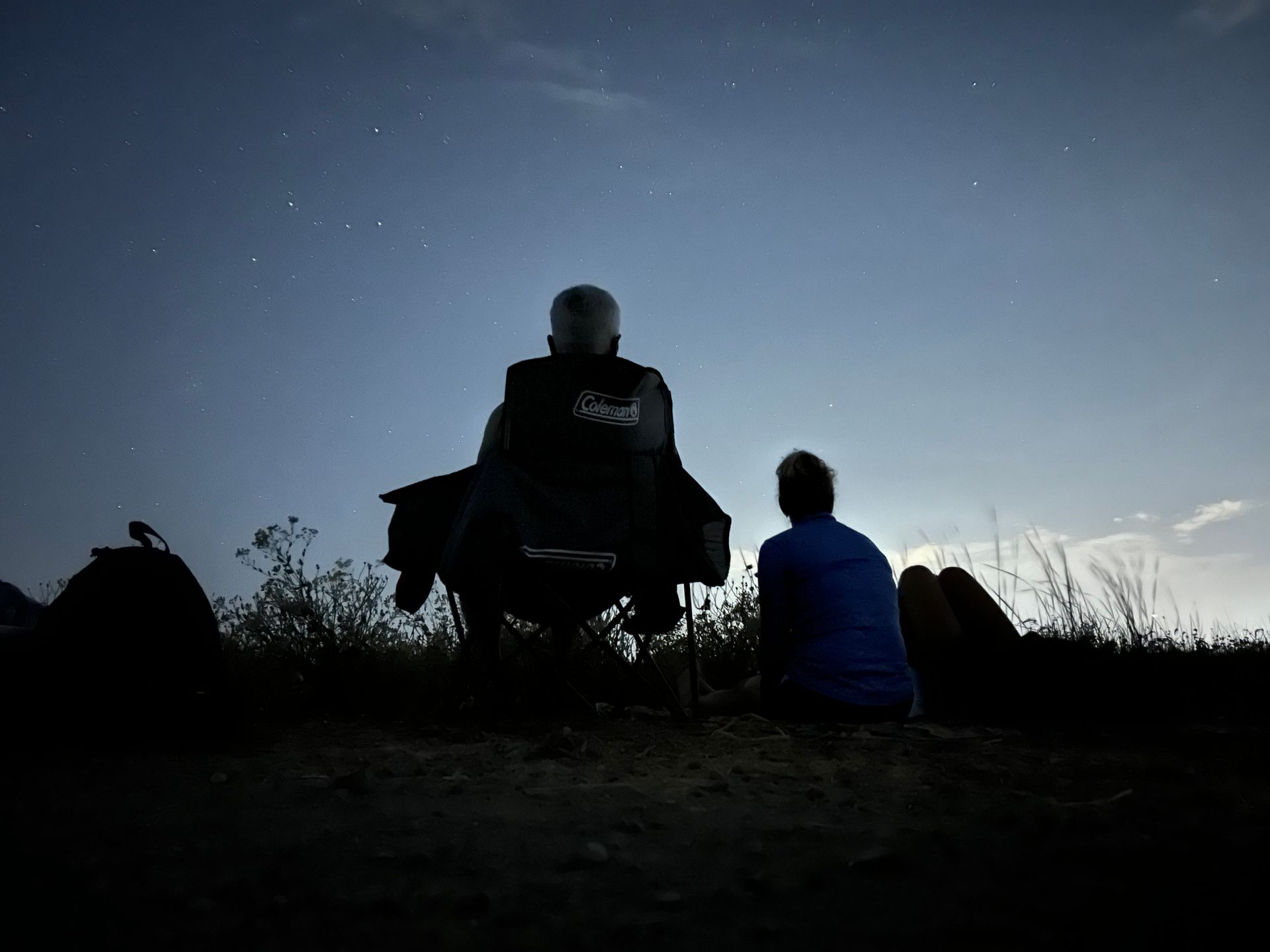
Meteor showers are sometimes called shooting stars but in actuality they aren’t stars at all. Meteors are actually rocks, dust and debris trailing behind an asteroid or a comet. Meteor showers happen when the Earth passes through a rubble field left behind by asteroids which are composed of metal or rock or comets which are primarily composed of dust, ice and/or rock. They happen annually as the Earth goes through its orbit and passes through the debris zone again year after year. The Perseid meteor shower is the result of the comet 109P/Swift-Tuttle (Swift-Tuttle). The Swift-Tuttle is a large comet with a nucleus that is 16 miles (!) across and was first discovered in 1862 by Lewis Swift and Horace Tuttle. Often regarded as the prime meteor shower of the year, the Perseid regularly boasts 50 to 100 meteors each hour! This year the Perseid’s prime viewing period peaks on the evening of August 12th and into the early morning hours of August 13th when the Earth is moving into the debris zone. Unfortunately it also occurs during a Gibbous moon - a phase of the moon with more than half of the moon’s surface being lit up by the sun; this year it is predicted to be about 84% illuminated. The brightness of the moon will obscure the night sky making it more difficult to view some of the dimmer meteors. Regardless of the moon or other factors such as cloud cover, the meteor shower is best observed between midnight and the early dawn hours. The Perseid meteor shower is known for being swift, bright and colorful leaving long wakes of light that track after them as they burn through the Earth’s atmosphere at 130,000 miles per hour. These vivid streaks are known as fireballs and travel at extremely high speeds with intense ionization resulting in especially radiant colors. These fireballs appear as various colors because of the different elements that they are composed of: red is a result of atmospheric gases and nitrogen, yellow/gold is iron, violet is calcium, orange is sodium and blue-green is magnesium. Primarily, the larger the piece of debris is, the more brilliant the meteor appears. If a meteor doesn’t burn up in the Earth’s atmosphere and makes it to the ground it is called a meteorite. For those of us here in the Northern Hemisphere the Perseids are best observed in the early morning hours and luckily for us, they occur during the warm summer when it’s pleasant to sit outside looking up to the sky. For the best viewing opportunity find a rural spot that is far away from ambient light such as street or yard lights with a clear and unobstructed view of the open, night sky. Grab a lawn chair or blanket and a buddy to "oooh" and "ahhh" with and get comfy. Be patient and allow time for your eyes to adjust to the darkness and then begin looking for bright streaks of light across the dark sky. The Perseid meteor shower originates near the constellation Perseus for which they are named. To find it look to the northeast for the constellation Cassiopeia (look for a W or an M in the sky) and Perseus will be located below it. If you can’t find it don’t worry, you should be able to see the streaking lights all over the sky but again, the bright moon will most likely make viewing some of the dimmer meteors difficult. You may be able to see more of them before they peak due to the darker moon. If you miss this one, keep an eye out for the Geminids meteor shower which peaks in mid-December!! -Kristie Ehrhardt ( kehrhardt@tuleyome.org ) Tuleyome Land Conservation Program Manager
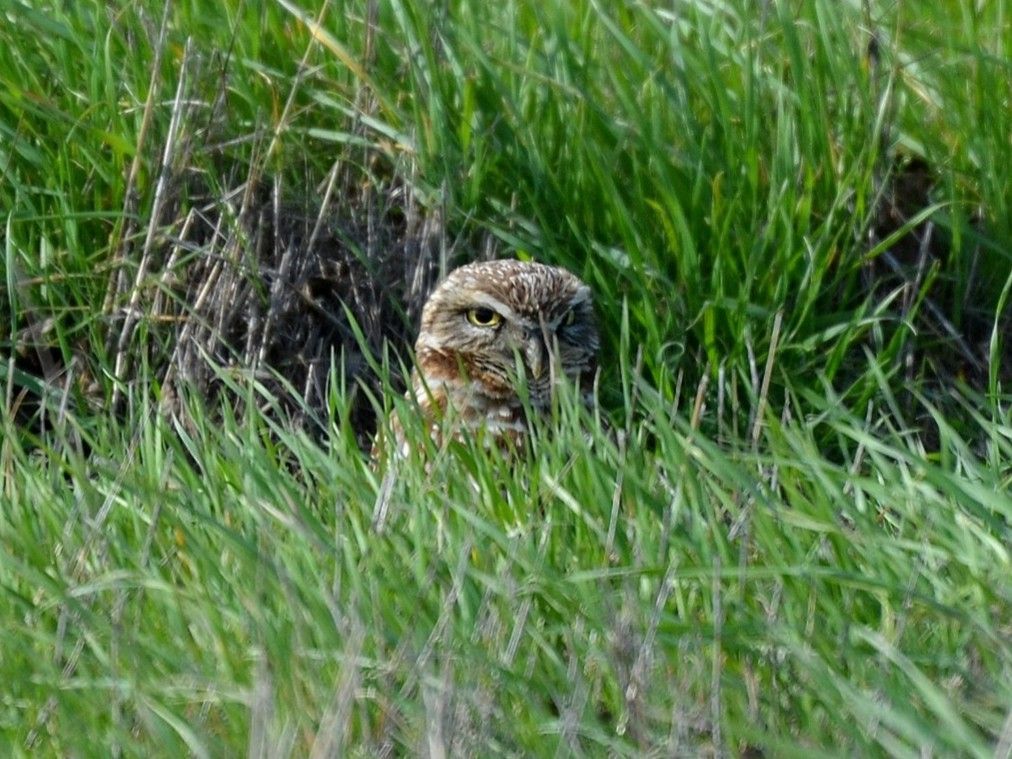
Do you remember the Haunted Forest in the Wizard of Oz? Most of us probably envision owls as those shadowy birds with the glowing eyes skulking at Dorothy and the gang from the dark tree canopy. True, most owls are nighttime creatures, and they do have large round eyes, but they certainly don’t glow like a red-hot cigarette lighter in a 1985 Oldsmobile. And yes, most species of common owls do roost in trees but, did you know that we have a very special little owl in our region that is active during the day as well as the night and nests and roots in underground burrows?! I realize that the name kind of gives it away but if you guessed Burrowing Owls, pat yourself on the back! Burrowing Owls ( Athene cunicularia ) are a small species of owl that belong to the family Strigidae, the same family that includes other owls in our region including Great-horned Owls, Screech Owls and the eared owls. The name Athene comes from the Greek goddess of wisdom and cunicularia translates from Latin to mean miner or burrower - quite literally meaning “wise burrower”. Burrowing Owls are fairly social and although they usually only have one mate at a time, they tend to nest and live in loose colonies. Males and females look alike however males are often lighter in color from sun bleaching as they spend more time outdoors while the females remain underground with the young. Both sexes average between seven and 11 inches long with wingspans of about 20-24 inches. They weigh five to eight ounces with females weighing slightly more than males. Both males and females lack ear tufts and have a flattened facial disk with prominent white eyebrows. Their large eyes are bright yellow, and their beaks are dark yellow to gray. Their heads, backs and wings are sandy brown with white mottling, and their abdomens and chests are a buffy brownish-gray with white barring. Juveniles look similar but lack the white mottling or barring. If you ask me, one of their most endearing physical traits are their long legs. Burrowing Owls prefer open areas and their lengthy legs allow them to perch on the ground and still keep watch over their surroundings. When disturbed, or even if they think they might be disturbed, agitated owls will bob up and down while chirping and giving whatever they’re perceiving as a threat the death stare. If that isn’t enough to intimidate the presumed threat, the owl will simply fly off. Another fascinating behavior is Burrowing Owls’ love of decor. They will collect things they find interesting and decorate the entrance of their burrow. These items often include flower petals, shiny things such as bottle caps, bits of beetle exoskeleton, and small rocks. Sometimes Burrowing Owls will collect scat from larger animals which in turn attracts dung beetles that become a “door dash” snack delivery for the owls. Being active during both the day and night hours helps the owls to secure different food sources; prey species include insects, amphibians and small lizards during the day and small mammals at night. There are several subspecies of Burrowing owls but the genus as a whole has historically occurred from southwestern Canada, the western United States (minus the humid Pacific Northwest) into Mexico and east into Florida, in Central America, some Caribbean Islands and in most of South America. Most populations of Burrowing Owls do not migrate but those that occupy the northern end of their range may migrate seasonally to avoid the cold winter months (I would too!). Their habitat preferences include open or grazed areas with shorter vegetation such as dry pastures, prairies, open grasslands, savannas with an established burrowing mammal population to provide underground nesting locations for the owls. Burrowing Owls are extremely adaptable and have also occupied urban areas such as airports, golf courses, grassy areas in highway interchanges, parks, schools, parking lots and even landfills and other other relatively undisturbed urban and suburban areas. Most individuals do not excavate their own burrows but rather take over abandoned mammal burrows including those dug by ground squirrels, prairie dogs and badgers. Some populations and subspecies will dig their own burrows or enhance those made by other species if the soil is not rocky or compact. Burrowing Owls have been documented utilizing man-made burrows as well. The subspecies found in our region is the Western Burrowing Owl ( Athene cunicularia hypugaea ). Once widely disturbed across California, habitat loss as a result of urbanization, ground squirrel population decline, pesticide use, predation from coyotes, foxes, badgers, feral cats and changes in land use practices have resulted in drastic population declines since the 1980’s. Several attempts have been made to give the Western Burrowing Owl protection as a special-status species, however, as of yet it has not been afforded any official lasting protection. If you’ve had the pleasure of observing burrowing owls you know exactly how charismatic they can be. If you haven’t seen them do keep your eyes open for them, you’ll be glad you did! -Kristie Ehrhardt ( kehrhardt@tuleyome.org ) Tuleyome Land Conservation Program Manager
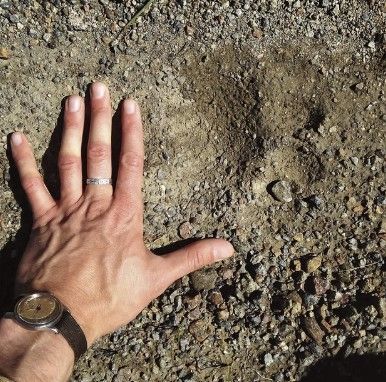
Photo by Nate Lillge Our July Nature and You lecture took place on July 31 st and featured a conversation on the Berryessa Snow Mountain National Monument and current threats to public lands with Tuleyome Executive Director Sandra Schubert and Tuleyome co-founder and Advisory Council member Bob Schneider. If you missed it, be sure to check out the recording for a discussion on the history of the monument and ways we can work to protect our public lands.
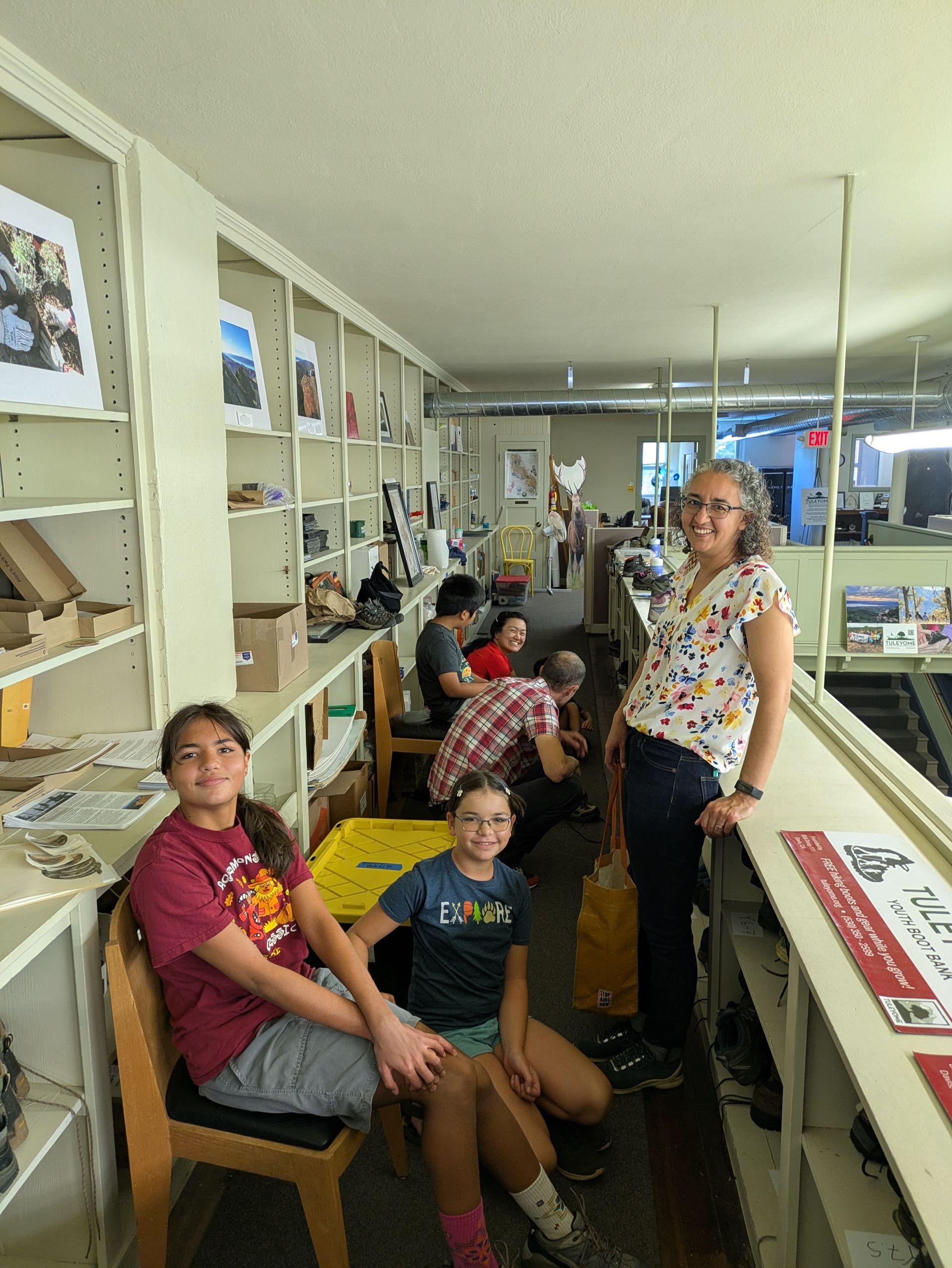
Our July Youth Boot Bank office hours were busy with several kids coming in to trade in previously borrowed boots for larger sizes. We also made a few new loans and took in returns and donations. The Youth Boot Bank provides free 6-month loans of hiking boots to kids up to age 18. We also have a library of camping gear that is available for participants on Tuleyome camping trips and to other local organizations that are hosting camping trips. Our Youth Boot Bank office hours take place on the first Wednesday of each month, from 2:30 – 5:30pm at the Tuleyome office in Woodland (622 Main Street). Our next office hours will be on August 6 th and September 3 rd – stop by if you’d like to borrow some boots, return boots, make a donation, or say hi! If you have any questions about the Youth Boot Bank program, please contact Geoff Benn at gbenn@tuleyome.org .
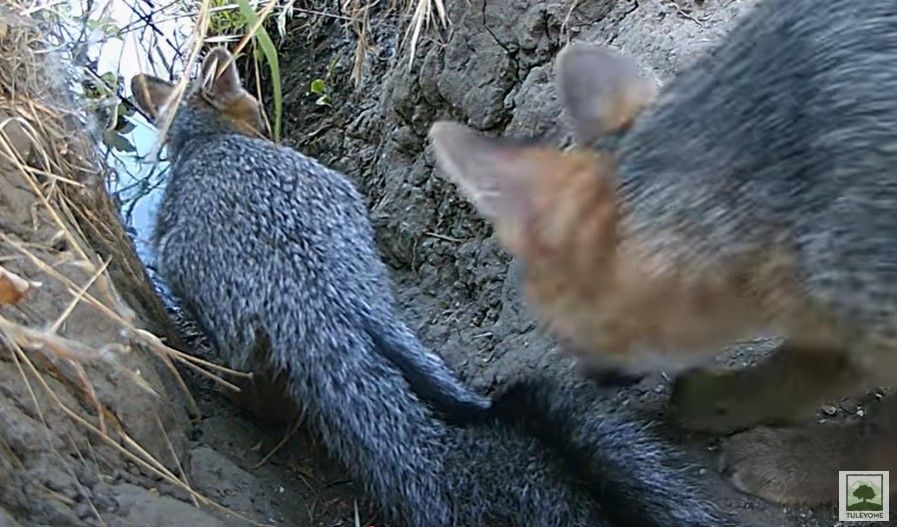
River otters climbing up the slide It was a busy June and July for wildlife out at Conaway Ranch, where our game cameras have captured some great footage! We place game cameras at an otter slide (a place where otters and other animals access the water) to capture footage of wildlife to share with classes coming to the Ranch on our field trips.
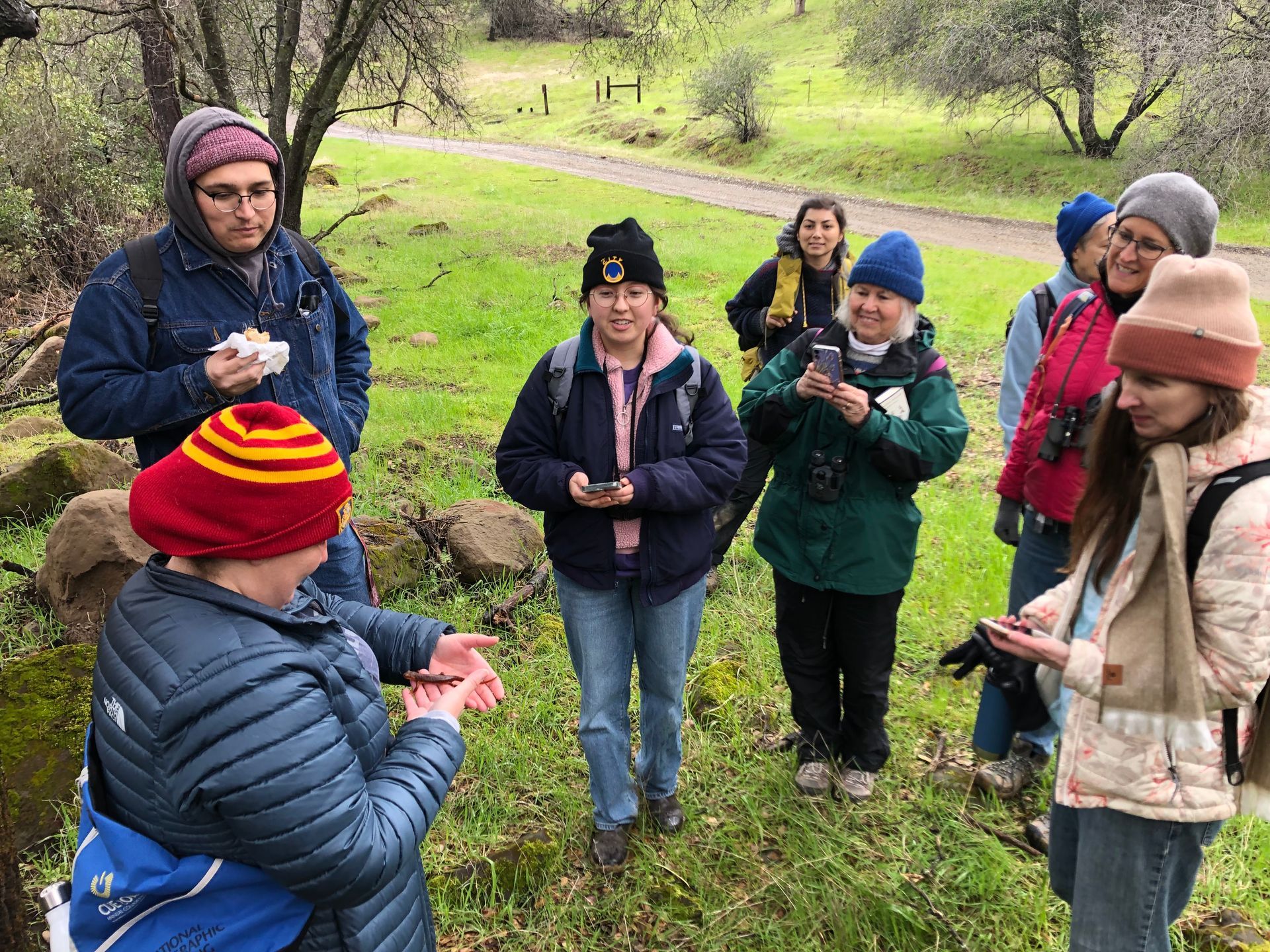
We are excited to announce the dates for next year's Certified California Naturalist courses! Our multi-week course will be held Fridays, January 16 to March 6 with three field trips held on Saturdays. Our one-week immersive course at Wilbur Hot Springs Resort is April 12 - 17 . Tuleyome’s Certified California Naturalist (CalNat) program trains members of the public to become California Naturalists. No advanced degree or previous naturalist experience is required – Tuleyome teaches you everything you need to know to become certified. Our course is focused on the northern inner Coast Range mountains, specifically the Berryessa Snow Mountain National Monument region. The program, developed by the University of California Agriculture and Natural Resources, is designed to introduce Californians to the wonders of our unique ecology and engage the public in study and stewardship of California’s natural communities. The California Naturalist program uses science curriculum, hands-on learning, problem-solving, participatory science, and community service to instill a deep appreciation for the natural communities of the state and to inspire individuals to become stewards of their local resources. Courses combine classroom and field experience in science, problem-solving, communication training and community service, taught by an instructor and team of experts. Check out the Certified California Naturalist page for more information. -Nate Lillge (nlillge@tuleyome.org) Tuleyome Adventures and Engagement Director Certified California Naturalist



